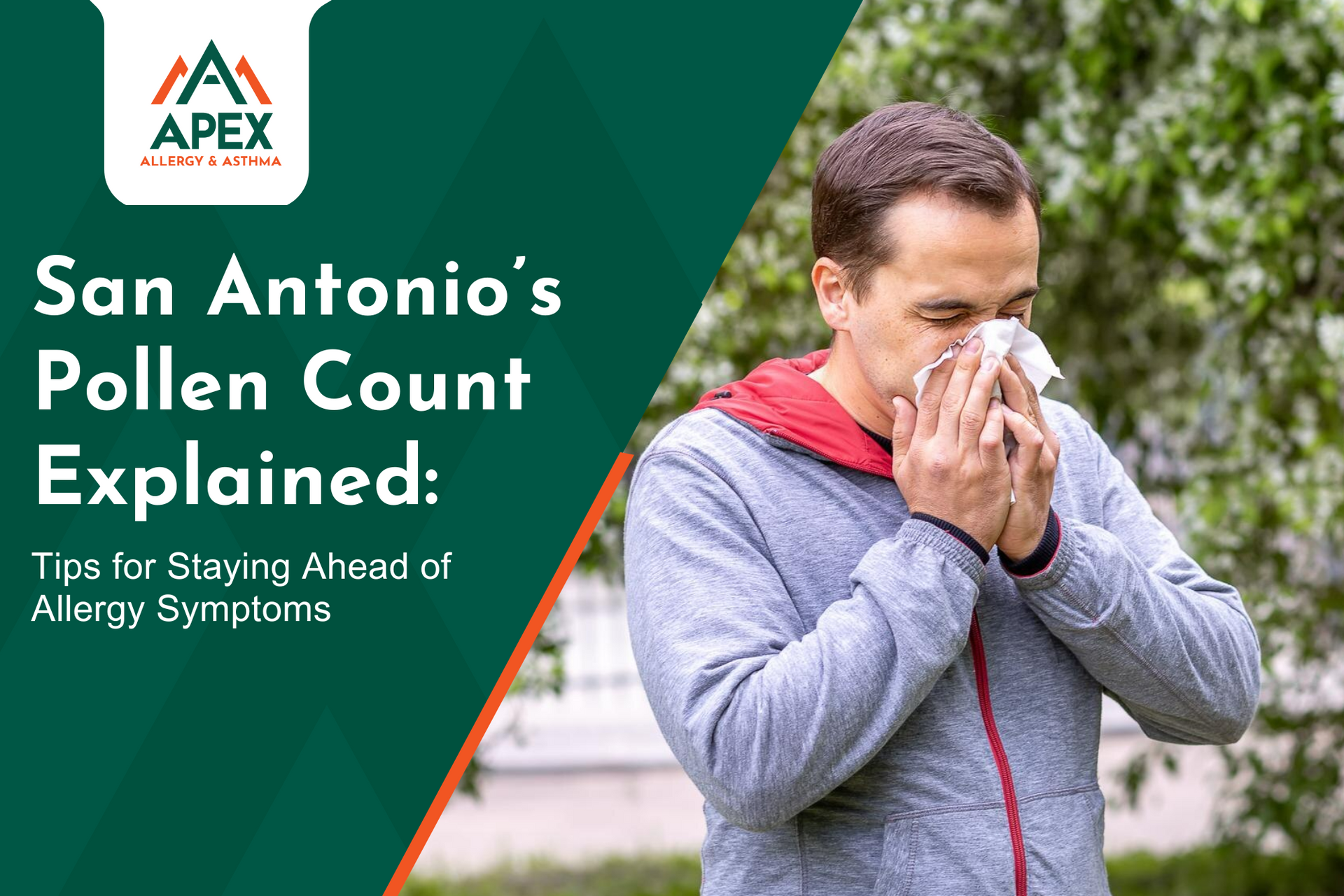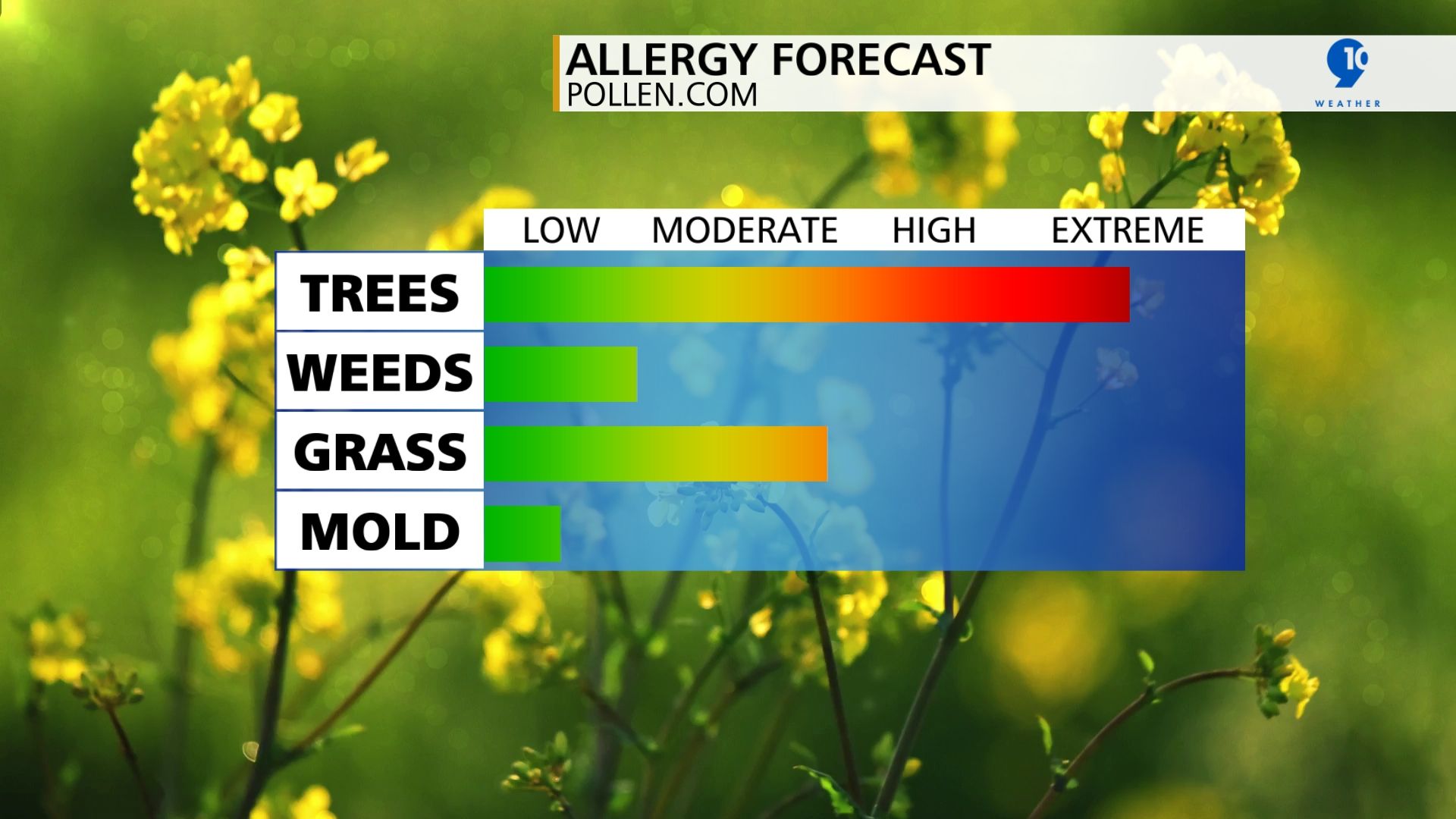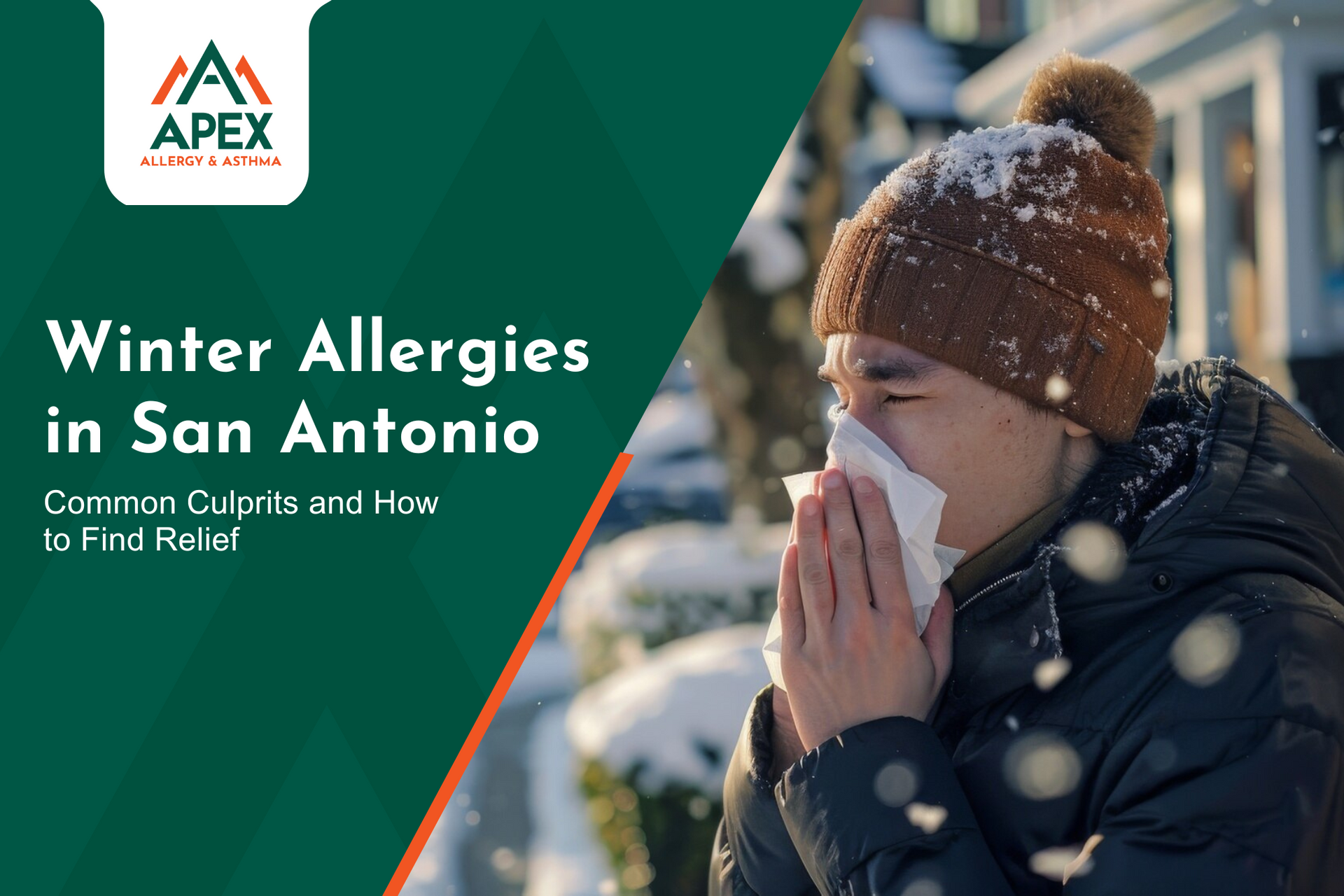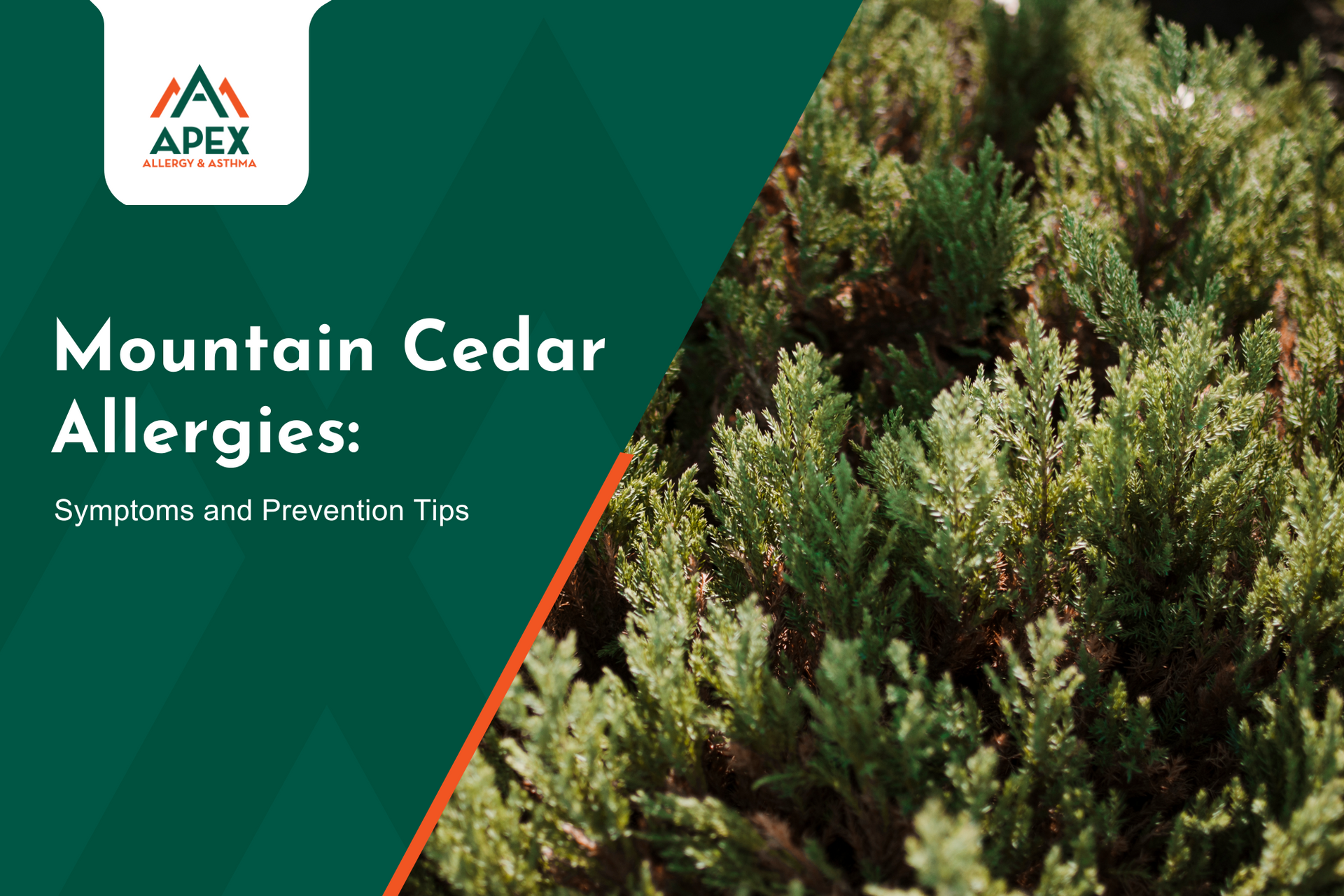San Antonio’s Pollen Count Explained: Tips for Staying Ahead of Allergy Symptoms

San Antonio, Texas, is famous for its rich culture, delicious Tex-Mex cuisine, and—unfortunately—its brutal allergy seasons. If you feel like you have been sneezing all season, you’re not imagining things. Because of the warm climate and pollen-packed air, San Antonio allergies are no joke.
For allergy sufferers, checking the pollen count is a game changer. It helps people know when to take precautions to avoid a full-blown allergy flare-up. High pollen levels can make even a short trip outside feel miserable, while low counts might offer a rare breath of relief.
In this guide, we’ll break down what pollen counts really mean, when seasonal allergies in San Antonio hit the hardest, and, most importantly, how to fight back. Ready to breathe easier? Let’s get started.
Protect Yourself From Pollen Allergy
Understanding San Antonio's Pollen Count
What exactly is a pollen count, and why does it matter? Simply put, it measures how much pollen is floating in the air on any given day. Scientists collect air samples, analyze them under a microscope, and assign a number to tell us whether pollen levels are low, moderate, high, or very high, which are usually expressed as grains per cubic meter (grains/m³).

Image source: 9and10news.com
Interpreting Pollen Counts
The American Academy of Allergy, Asthma, and Immunology (AAAAI) provides guidelines for interpreting pollen counts in grains per cubic meter:

- Low: Most people won’t have symptoms, but extremely sensitive individuals should check pollen counts and enjoy outdoor activities with minimal precautions.
- Moderate: Some allergy sufferers may notice symptoms, so it’s best to limit outdoor time, wear sunglasses, and rinse off after being outside.
- High: Most people with allergies will feel symptoms, so keep windows closed, if possible, avoid outdoor activities, and take allergy medications if needed.
- Very High: Almost everyone with allergies will experience significant symptoms, so it is best to stay indoors, use HEPA filters, wear a mask outside, and consider stronger treatments.
San Antonio's Allergy Seasons: What to Expect
The warm climate in San Antonio means allergy season isn’t just a springtime issue. Different types of pollen dominate throughout the year, keeping allergy sufferers on their toes.

What's Next?
If you feel like allergies never give you a break, you’re not alone! We’ve helped many people learn how to fight back. In the next section, we’ll cover how to track pollen counts and ways to protect yourself from allergy misery.
How to Check the Pollen Count in San Antonio
Pollen levels fluctuate daily, and knowing the forecast can help you plan ahead.
Where to Check Pollen Counts
Before stepping outside, a quick pollen track can save you from an itchy, sneeze-filled day. Here are some trusted sources:
- Local News & Weather: Stations like KSAT and WOAI often include allergy forecasts.
- Weather & Allergy Apps: Apps by The Weather Channel, AccuWeather, and Pollen.com provide real-time pollen levels.
- Allergy-Specific Websites: Check the American Academy of Allergy, Asthma & Immunology (AAAIA.org) for reliable pollen tracking.
- Apex Allergy and Asthma: Follow us for updates and expert tips tailored to San Antonio allergy sufferers.
The Weather's Role in Pollen Levels
Ever noticed that allergies seem worse on some days? The weather plays a huge role:
- Windy Days: Bad news! The wind stirs up pollen and spreads it everywhere.
- Rainy Days: A relief! Rain washes pollen from the air, giving allergy sufferers a break.
- Hot, Dry Days: Toughest for people with allergies. Pollen stays airborne longer, making symptoms worse.
Tips for Staying Ahead of Allergy Symptoms
Now that you know how to track pollen counts, it’s time to strategize! Learn simple but effective ways to minimize exposure and manage pollen allergy symptoms.
- Avoid Pollen Peak Hours
Stay indoors in the early morning and on windy days. Go out later in the afternoon or after the rain.
- Keep Your Home Pollen-Free
- Close windows on high pollen days.
- Use an air purifier to trap allergens.
- Vacuum with a HEPA filter and dust regularly.
- Change and Shower After Going Outside
- Rinse off pollen with a quick shower.
- Swap outdoor clothes for clean ones before bed.
- Protect Yourself Outdoors
- Wear sunglasses to shield your eyes.
- Use a mask to filter airborne pollen.
- Take Allergy Meds Early
- Antihistamines: To prevent sneezing, itching, and runny nose.
- Nasal Sprays: To reduce inflammation/congestion for clearer airways.
- Allergy Shots: A long-term relief if other treatments fail.
Managing allergies is all about staying a step or two ahead. If symptoms persist, our allergists at
Apex Allergy and Asthma can help tailor a forward-thinking treatment plan just for you.
When to See an Allergist
Tried every allergy trick in the book but still suffering? If your symptoms make daily life miserable, it might be time to call the experts. An allergist can help you get to the root of the problem and find real, lasting relief.
Signs It's Time to See an Allergist
Not sure if you need professional help? Here are some red flags that mean it’s time to get expert help:
- Persistent Symptoms: Your sneezing, congestion, or itchy eyes won’t go away despite taking medication.
- Chronic Congestion: You always feel stuffy, even when pollen counts are low.
- Asthma Attacks: Your allergies trigger coughing, wheezing, or shortness of breath.
- Frequent Sinus Infection: Constant inflammation can lead to recurring infections.
How Allergy Testing and Immunotherapy Can Help
Seeing an allergist can help you take control of your allergies for good.
Taking allergy tests identifies what’s exactly triggering your symptoms so you can stop guessing.
- Immunotherapy (Allergy Shots or Drops)
These treatments train your immune system to become less sensitive to allergens, offering long-term relief.
- Customized Treatment Plans
Allergies act differently from person to person, and your treatment should be just as personalized. Get a treatment plan that is designed according to your specific allergy care needs.
Find Relief with Apex Allergy and Asthma
At Apex Allergy and Asthma, we understand that San Antonio’s allergy seasons can feel endless—but suffering doesn’t have to be. Led by Dr. Mark Stahl, our allergy care team provides expert allergy and asthma care, cutting-edge treatments, and personalized solutions to help you breathe easier year-round. Just ask our patients!
| “Fast, friendly staff and doctor answered all of our questions and developed a plan of action to get my son’s asthma and allergies under control.” - Brennan P. |
| “Minimum wait time. Friendly staff. The doctor took time to explain and answer questions,” says one of our loyal clients, Laura T. |
| “The staff at Apex Allergy is the best. They are all caring and kind and go out of their way to make everyone feel cared for,” shares Sandra C. |
Don’t let allergies ruin your life. Let us help you find a treatment that actually works for you!
Breathe Easier, Live Better

Pollen allergies might be relentless, but you don’t have to let them win! Regularly checking San Antonio pollen counts, avoiding peak allergy hours, and taking the right meds can make all the difference. But if sneezes and sniffles still crash your plans, it’s time to call in the experts.
Schedule an appointment today and experience the
Apex Allergy and Asthma
difference.
Escape the Pollen Allergy Trap



